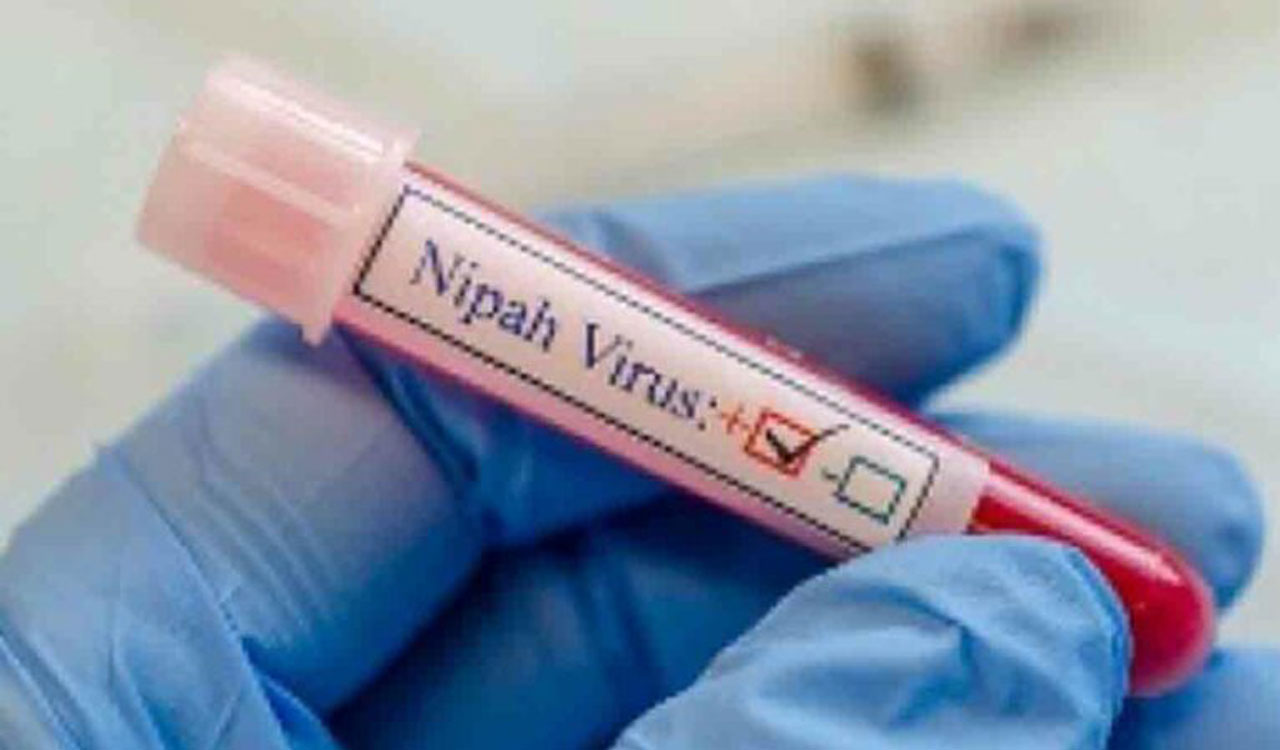After two “unnatural deaths” from fever in Kozhikode, the Kerala Health Department reportedly issued an alert about the Nipah virus infection.
Published Date – 02:33 PM, Wed – 13 September 23

Hyderabad: After two “unnatural deaths” from fever in Kozhikode, the Kerala Health Department reportedly issued an alert about the Nipah virus infection. Earlier, outbreaks of the virus took place in 2018 and 2021. Let’s know more about what exactly is Nipah virus, its symptoms and the precautions to be taken.
What is Nipah Virus:
The Nipah Virus (NiV) is a zoonotic virus, which means it can be transmitted to humans through infected animals or contaminated food. According to the WHO, it can also be transmitted directly through close contact with an infected person.
Origins of the infection:
The virus first emerged in 1998 in Malaysia and Singapore, primarily affecting domestic pigs. Nipah takes its name after a Malaysian village where the first human infection and fatality occurred.
The virus has since been found in several species of domestic animals, including dogs, cats, goats, horses and sheep. Transmission from animals to humans primarily occurs through the consumption of contaminated food. Fruit bats serve as the natural reservoir for the Nipah virus.
Importantly, Nipah is not an airborne infection; instead, it spreads through droplets and objects contaminated by secretions from infected animals or humans. Direct contact with live, infected animals or their bodily fluids can lead to human infection.
Symptoms of Nipah virus:
The virus is known to spread far more slowly than SARS-CoV-2. However, the biggest concern is the high fatality rate. According to the World Health Organization (WHO), the overall global case fatality rate of Nipah is estimated at 40 to 75 per cent.
According to WHO, symptoms of the Nipah Virus can range from asymptomatic infection, acute respiratory infection, and fatal encephalitis. Infected people initially develop influenza-like symptoms of fever, headache, myalgia, vomiting and sore throat. This can be followed by dizziness, drowsiness, altered consciousness, and neurological signs that indicate acute encephalitis.
Some people can also experience atypical pneumonia and severe respiratory problems, including acute respiratory distress. Encephalitis and seizures occur in severe cases, progressing to coma within 24 to 48 hours.
Precautionary measures:
Preventing the Nipah virus involves infection control measures like using protective equipment, disinfecting surfaces, avoiding close contact with sick animals, infected areas, and humans with the infection, practising good hygiene, being mindful about consuming fruits that may have been contaminated by bat saliva or urine, and rapidly identifying and isolating suspected cases.




